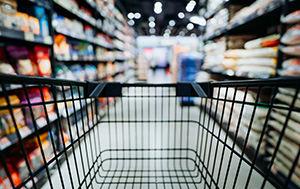Rising food and energy costs are affecting communities all over the world, while post-pandemic supply shortages and knock-on effects of the conflict in Ukraine are increasingly putting a strain on consumers.
In addition to this, financial and supply constraints often present unique shifts in consumer expectations, as people look to find ways to adapt in difficult times.
Here are four ways the cost-of-living crisis is influencing some emerging consumer food trends:
1 - Consumers are seeking adaptable and energy efficient meals
We know that consumers are looking for convenience when it come to the foods they eat, as time-poor consumers seek tasty on-the-go food and drink that meets nutritional requirements.
This trend is unlikely to fade and has been growing for a number of years, as products that save time and stress through ease of preparation become ever more desirable.1
We can also expect to see demand in energy saving – we expect consumers to see a benefit in having energy-efficient food and drink on hand during the winter months when costs are increasing.
2 - Polarisation in pack-size preference
As purse strings tighten, we can expect to see consumers become increasingly aware of the optimum pack sizes that meet their requirements and provides value for money. While larger ‘value packs’ of some goods can offer bulk savings, it’s also expected that small-pack sizes will see an uptick in demand as consumers seek individual portions and minimal waste, plus looking to only buy what they need now, rather than trying to cover a longer period.2
Consumers will likely look to adapt to make the most of what they have, pivoting their meal plans depending on finances and availability,3 and even trying new products and preparations in order to liven up home cooking.4
3 - Pocket friendly treats
Better-for-you snacking is a well-established trend due to the rise of the busy on-the-go lifestyles consumer lead. However, as consumers increasingly worry about rising costs and inflation, we could start to see demand rise for indulgent snacks as shoppers turn to treats that bring comfort.5
We can expect to see a rise in ‘mini format’ product launches of existing indulgent snacks, giving consumers something tasty at a lower cost, without compromising on brand quality.6
4 - Relying on affordable and filling comfort foods
Despite consumers’ increased attention to transparency and clean-label products, inflation and economic uncertainty could cause some to turn back to familiar, comforting foods that make them feel happier.7
Popular carbohydrates like pasta or bread may be more regularly sought by consumers due to their cost, convenience and satiety. During the economic crisis in 2008, people turned to carbohydrates as the economic and satisfying choice.
Stressed or worried consumers may also increasingly ignore their low-sugar preferences in order to partake in an indulgent dessert.
References
1 Mintel 2022
2 Global data
3-5 Mintel 2022
6 Mintel APAC
7 New-nutrition.com
8 Mintel 2022
